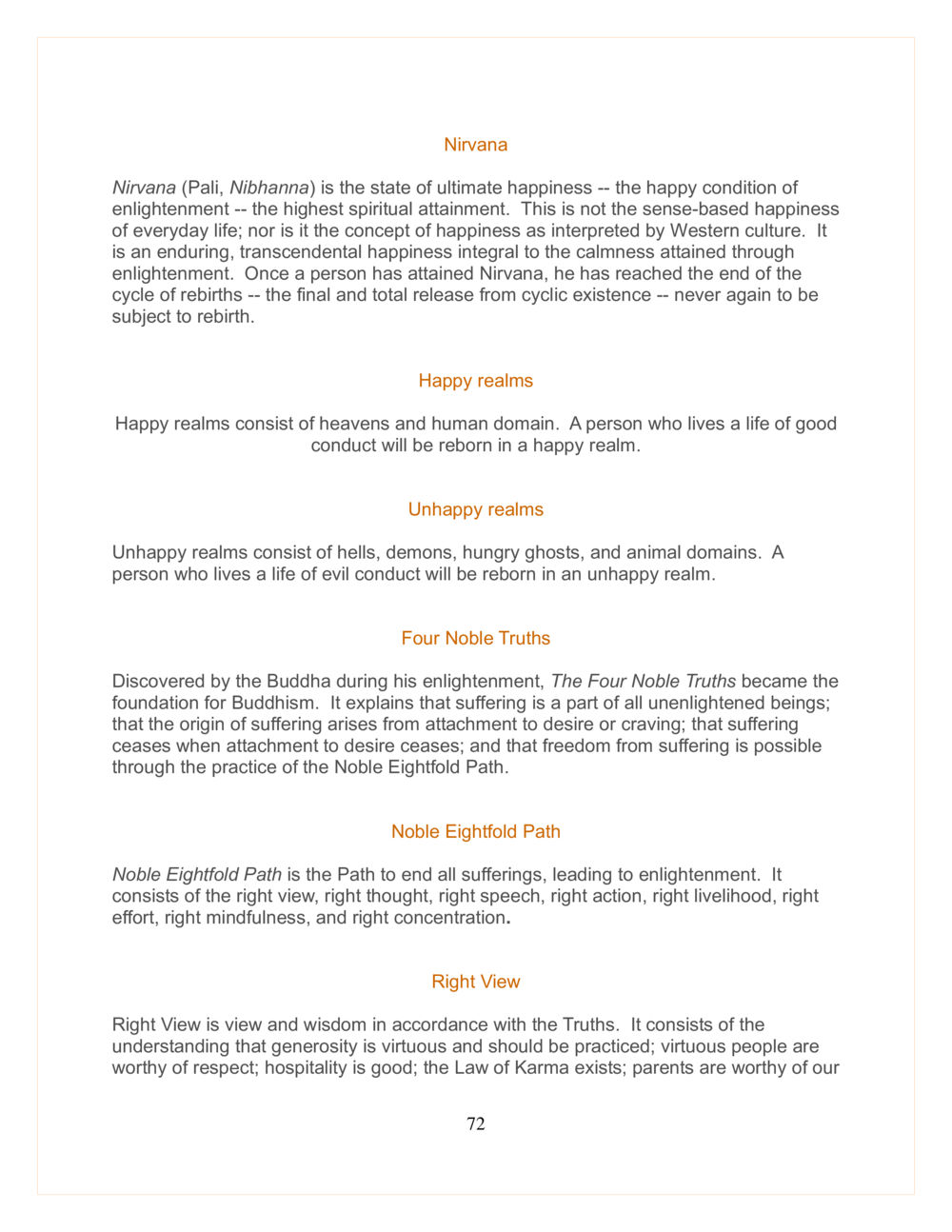Understanding Nirvana and the Path to Enlightenment : หน้า 72/115
DMC Translor’s handbook : หน้า 72/115 Explore the concept of Nirvana, the Four Noble Truths, and the Noble Eightfold Path to achieve ultimate happiness and enlightenment in Buddhism.
1 ครั้ง

สรุปเนื้อหา
Nirvana, or Nibbanna, represents the ultimate state of happiness in Buddhism, transcending the sense-based joys of daily life. Attaining Nirvana marks the end of the rebirth cycle, granting liberation from cyclic existence. The text discusses the distinction between happy and unhappy realms based on one's conduct, emphasizing that virtuous living leads to rebirth in blissful realms while evil actions lead to suffering. Central to this understanding are the Four Noble Truths, which outline the nature of suffering, its origins in desire, the path to cessation, and the possibility of liberation through the Noble Eightfold Path. This path includes right view, thought, speech, action, livelihood, effort, mindfulness, and concentration, guiding practitioners toward enlightenment while fostering respect for moral conduct and the Law of Karma.
หัวข้อประเด็น
-Nirvana
-Four Noble Truths
-Noble Eightfold Path
-Happy and Unhappy Realms
-Spiritual Enlightenment
-Buddhist Philosophy
-Moral Conduct



















































































































